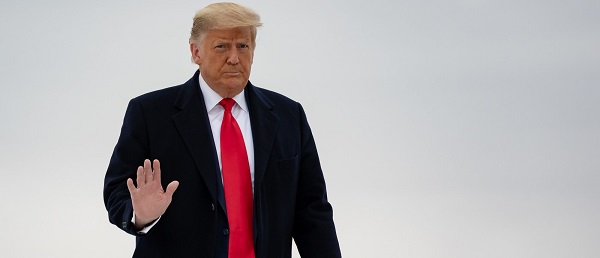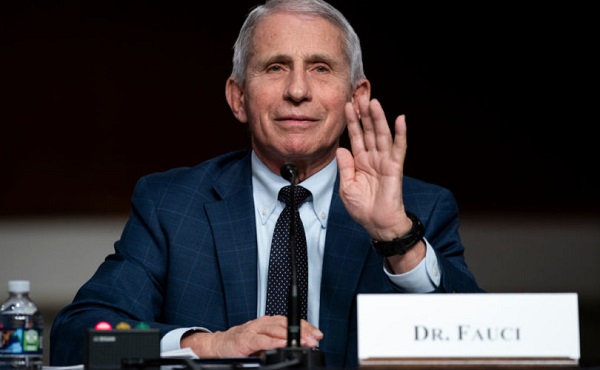Frontier Centre for Public Policy
Is the Senate in Violation of the 2006 Indian Residential Schools Settlement Agreement, and Hindering Reconciliation?
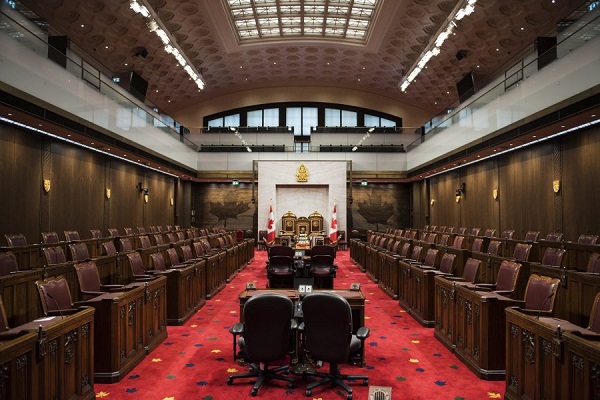
From the Frontier Centre for Public Policy
By Nina Green
Since it is abundantly clear there are no missing Indian residential school children, the ‘missing records’ by which they can be found are also imaginary, and the Senate Committee has been on a pointless wild goose chase
In July 2024 the Standing Senate Committee on Indigenous Peoples issued an Interim Report entitled ‘Missing Records, Missing Children’.
The problem with that title? There are no missing Indian residential school children.
Special Interlocutor Kimberly Murray told the Senate Committee on 21 March 2023 that there are no missing children, and in support of that one need only look to her own two interim reports, neither of which identifies a single Indian residential school child who went missing and whose parents didn’t know what happened to their child. In two years as Special Interlocutor, Kimberly Murray has not been able to name a single child who verifiably went missing from an Indian residential school.
Similarly, after two years of hearings, the Senate Committee itself was unable to name a single verifiably-missing Indian residential school child in its report.
Nor in fact has anyone in Canada to date been able to name a single verifiably-missing Indian residential school child.
Since it is abundantly clear there are no missing Indian residential school children, the ‘missing records’ by which they can be found are also imaginary, and the Senate Committee has been on a pointless wild goose chase which has cost Canadian provinces a very considerable amount of money since many of the witnesses called by the Committee have been provincial government employees whose departments have been forced to expend staff time and financial resources fruitlessly searching for records of missing Indian residential school children who are not missing.
Moreover by calling provincial coroners, medical examiners, and vital statistics department officials as witnesses, the Senate Committee has given the distinct impression that it is conducting a criminal investigation, and by focussing on Indian residential schools, the Committee has also given the distinct impression it has reconstituted itself as a new Truth and Reconciliation Commission (TRC), and is therefore in violation of the 2006 Indian Residential Schools Settlement Agreement.
What justification does the Senate Committee have for conducting this public inquiry into ‘Missing Records, Missing Children’, and threatening to compel the attendance of witnesses at its hearings?
The Committee cites the following Order of Reference passed by the full Senate as justification for its July 2024 report, and for the sweeping and far-reaching recommendations the report contains:
ORDER OF REFERENCE
Extract from the Journals of the Senate of Thursday, March 3, 2022:
The Honourable Senator Francis moved, seconded by the Honourable Senator Cordy:
That the Standing Senate Committee on Aboriginal Peoples be authorized to examine and report on the federal government’s constitutional, treaty, political and legal responsibilities to First Nations, Inuit and Métis peoples and any other subject concerning Indigenous Peoples; . . . .
It is glaringly obvious that the Order of Reference did not authorize the Committee to examine and report on missing Indian residential school children and missing records. The Senate is part of the federal government, the major party to the 2006 Indian Residential Schools Settlement Agreement under which Canadian taxpayers paid out billions of dollars to have all matters related to Indian residential schools settled once and for all – not re-opened by the Senate Committee on a whim. The Senate Committee has thus interpreted the Order of Reference as giving it an authority the full Senate did not explicitly mention, and in fact had no power to grant to the Committee.
During its proceedings over the past two years, the Senate Committee did not trouble itself to prove that there actually are missing Indian residential school children. Instead, the Committee operated on the basis that there are missing children even when Special Interlocutor Kimberly Murray told the Committee that ‘The children aren’t missing’.
Based on the false assumption that there are missing Indian residential children, the Committee proceeded to castigate those the Committee falsely claimed were ‘withholding’ records which would help to find them.
In doing so, the Committee ignored the fact that the only body which was ever actually entitled to records was the Truth and Reconciliation Commission (TRC).
Under the 2006 Indian Residential Schools Settlement Agreement, $60 million dollars was allocated to fund a Truth and Reconciliation Commission, and section 11 of the TRC’s Schedule N mandate stated that, subject to privacy interests:
Canada and the churches will provide all relevant documents in their possession or control to and for the use of the Truth and Reconciliation Commission.
It should be noted that under the TRC’s Schedule N mandate important limitations were put in place stipulating who was obligated to provide documents to the TRC, how long that obligation was to exist, and what was to be done in case of a dispute about the production of documents. The TRC’s Schedule N mandate provided that:
(1) only the federal government and the churches – i.e., not provincial governments or any other entity – were obliged to provide documents;
(2) the federal government and churches were only obliged to provide documents to the TRC during the TRC’s five-year mandate; and
(3) under section 2(l) of the TRC’s Schedule N mandate any ‘disputes over document production’ would be referred to an officially-designated body, the National Administration Committee (NAC) set up under section 4.11 of the 2006 Settlement Agreement.
The TRC concluded its work and issued a final report in 2015. That marked the end of any obligation on the part of the federal government and the churches to provide documents to the TRC, which ceased to exist and had no successor.
The Senate Committee has thus invented a problem where none existed.
That being the case – there was no problem until the Senate Committee invented one – exactly what is the problem the Senate Committee invented?
Again, one must refer back to the 2006 Settlement Agreement and the TRC’s Schedule N mandate. Section 2(a) of the Schedule N mandate states that, subject to privacy legislation, the TRC was:
authorized and required in the public interest to archive all such documents, materials, and transcripts or records of statements received, in a manner that will ensure their preservation and accessibility to the public.
To fulfil this part of its mandate, in 2013 the TRC entered into a trust deed with the University of Manitoba by which the University undertook to preserve the TRC records and make them available to the general public. That has not been done. The University of Manitoba has not made the records generated by the TRC itself in the course of its work and the records turned over to it by the federal government and the churches prior to 2015 available to the general public on its National Centre for Truth and Reconciliation (NCTR) Archives website. In particular, the University of Manitoba has not made available on its NCTR website the Sisters’ chronicles and Oblate codices which recorded daily life in the schools. Instead, the University has allowed its staff at the NCTR (which is not a legal entity and is not a successor to the TRC, but merely a building on the University of Manitoba campus staffed by University of Manitoba employees) to turn its millions of digitized records into a publicly-funded Indigenous genealogical service, as Head Archivist Raymond Frogner has explained on several occasions, and as Tanya Talaga documents in her new book, The Knowing.
Thus, if the Senate Committee had wanted to investigate an actual problem, it could have investigated why the University of Manitoba has not complied with its legal obligations under the 2013 trust deed and has not made the TRC records available to the general public as mandated by the 2006 Indian Residential Schools Settlement Agreement and the TRC’s Schedule N mandate, particularly the Sisters’ chronicles and Oblate codices which recorded daily life in the schools.
Instead of investigating that very real problem, the Senate Committee pursued a problem of its own invention by falsely claiming that records were being withheld from the ‘NCTR’ by Catholic church and provincial entities. This appears to be deliberate obfuscation because the Senate Committee must surely know that the NCTR is not a legal entity, and thus cannot legally receive documents. The actual recipient of documents sent to the ‘NCTR’ is the University of Manitoba, a fact which is never mentioned in the Senate report. Moreover the Senate report provided no evidence that any documents were actually being withheld, which of course it could not have done even had it tried since there is no legal obligation on the part of any entity to provide the University of Manitoba and the University’s NCTR staff with documents or records.
Ignoring the fact that it had invented a non-existent problem, the Senate Committee forged ahead, holding hearings and threatening to compel the attendance of witnesses. It is noteworthy that in so doing the Committee engaged in conduct which the TRC itself was forbidden to engage in under its Schedule N mandate, which states that ‘Pursuant to the Court-approved final settlement agreement and the class action judgments’, the TRC:
(b) shall not hold formal hearings, nor act as a public inquiry, nor conduct a formal legal process;
(c) shall not possess subpoena powers, and do not have powers to compel attendance or participation in any of its activities or events. Participation in all Commission events and activities is entirely voluntary;
Here is what Senator Scott Tannas had to say about holding hearings and hauling up witnesses in public on 21 March 2023 in an exchange with the University of Manitoba’s employee, Stephanie Scott:
Senator Tannas: Thank you for being here today. Ms. Scott, you mentioned that there are still organizations and people with data that has not been turned over to you. We all want to do things to help. Part of helping is listening and talking, but sometimes part of help that we can provide is to actually do something. Here in the Senate, we do have the ability to hold oversight hearings. We can compel people to come and testify before us. What would you think if you gave us the names and the contacts for organizations that aren’t providing data, and we’ll haul them up here in public and we’ll ask them why?
Ms. Scott: I would love for you to do that. We have been waiting a long time, and I think it’s absolutely crucial. When Tk’emlúps happened and the children began to speak from beyond, that’s when the world and the landscape changed for us. We used to have to do a lot of reaching out across the country, developing partnerships, still trying to acquire different records. We have worked closely — I think it’s time — the time is now, the time could be today that you call upon those people, and I would be more than willing to share that information with you. We have done a public media campaign. There are no secrets. Everything has been public and we all know what’s happened, many of us here at this table. If you are willing to do that, I respectfully would ask you to help.
Senator Tannas: I certainly would advocate for that. If you want to send the clerk, for future discussions, the name of let’s say the three most flagrant and obvious resistors, we could start maybe there and talk about it as a group. All senators would have to agree that’s a kind of meeting that we were going to have. To me, there is a time for action. As Senator Arnot mentioned, we’re not going to get anywhere until we get all the data. We won’t get to the full and complete truth, which is what all Canadians should want. It’s the only way we’re going to move forward. Thank you, that’s the only question I had.
‘Flagrant and obvious resistors’? It is unconscionable that Stephanie Scott, an employee of the University of Manitoba, would agree to provide (and did provide) the Senate Committee with a list of ‘flagrant and obvious resistors’ when she has to be aware that there is no legal obligation on the part of any entity to provide a single document to the University of Manitoba or its NCTR staff.
But even more importantly, it is unconscionable that the University of Manitoba and its NCTR employees continue to pretend that there are missing children, and continue to pretend that the University needs millions of records to identify these non-existent missing children.
Does the Senate Committee’s report further reconciliation? Obviously not. The report misleads Canadians, both Indigenous and non-Indigenous, in a way which is harmful to both by pretending that thousands of Indian residential school children are missing who are not missing, and that the provinces and the Catholic Church are withholding records that would help find them.
The Senate Committee should immediately withdraw its July 2024 interim report.
Nina Green is an independent researcher who lives in British Columbia.
Business
Hudson’s Bay Bid Raises Red Flags Over Foreign Influence

From the Frontier Centre for Public Policy
A billionaire’s retail ambition might also serve Beijing’s global influence strategy. Canada must look beyond the storefront
When B.C. billionaire Weihong Liu publicly declared interest in acquiring Hudson’s Bay stores, it wasn’t just a retail story—it was a signal flare in an era where foreign investment increasingly doubles as geopolitical strategy.
The Hudson’s Bay Company, founded in 1670, remains an enduring symbol of Canadian heritage. While its commercial relevance has waned in recent years, its brand is deeply etched into the national identity. That’s precisely why any potential acquisition, particularly by an investor with strong ties to the People’s Republic of China (PRC), deserves thoughtful, measured scrutiny.
Liu, a prominent figure in Vancouver’s Chinese-Canadian business community, announced her interest in acquiring several Hudson’s Bay stores on Chinese social media platform Xiaohongshu (RedNote), expressing a desire to “make the Bay great again.” Though revitalizing a Canadian retail icon may seem commendable, the timing and context of this bid suggest a broader strategic positioning—one that aligns with the People’s Republic of China’s increasingly nuanced approach to economic diplomacy, especially in countries like Canada that sit at the crossroads of American and Chinese spheres of influence.
This fits a familiar pattern. In recent years, we’ve seen examples of Chinese corporate involvement in Canadian cultural and commercial institutions, such as Huawei’s past sponsorship of Hockey Night in Canada. Even as national security concerns were raised by allies and intelligence agencies, Huawei’s logo remained a visible presence during one of the country’s most cherished broadcasts. These engagements, though often framed as commercially justified, serve another purpose: to normalize Chinese brand and state-linked presence within the fabric of Canadian identity and daily life.
What we may be witnessing is part of a broader PRC strategy to deepen economic and cultural ties with Canada at a time when U.S.-China relations remain strained. As American tariffs on Canadian goods—particularly in aluminum, lumber and dairy—have tested cross-border loyalties, Beijing has positioned itself as an alternative economic partner. Investments into cultural and heritage-linked assets like Hudson’s Bay could be seen as a symbolic extension of this effort to draw Canada further into its orbit of influence, subtly decoupling the country from the gravitational pull of its traditional allies.
From my perspective, as a professional with experience in threat finance, economic subversion and political leveraging, this does not necessarily imply nefarious intent in each case. However, it does demand a conscious awareness of how soft power is exercised through commercial influence, particularly by state-aligned actors. As I continue my research in international business law, I see how investment vehicles, trade deals and brand acquisitions can function as instruments of foreign policy—tools for shaping narratives, building alliances and shifting influence over time.
Canada must neither overreact nor overlook these developments. Open markets and cultural exchange are vital to our prosperity and pluralism. But so too is the responsibility to preserve our sovereignty—not only in the physical sense, but in the cultural and institutional dimensions that shape our national identity.
Strategic investment review processes, cultural asset protections and greater transparency around foreign corporate ownership can help strike this balance. We should be cautious not to allow historically Canadian institutions to become conduits, however unintentionally, for geopolitical leverage.
In a world where power is increasingly exercised through influence rather than force, safeguarding our heritage means understanding who is buying—and why.
Scott McGregor is the managing partner and CEO of Close Hold Intelligence Consulting.
Business
Canada Urgently Needs A Watchdog For Government Waste

From the Frontier Centre for Public Policy
By Ian Madsen
From overstaffed departments to subsidy giveaways, Canadians are paying a high price for government excess
Not all the Trump administration’s policies are dubious. One is very good, in theory at least: the Department of Government Efficiency. While that term could be an oxymoron, like ‘political wisdom,’ if DOGE is useful, so may be a Canadian version.
DOGE aims to identify wasteful, duplicative, unnecessary or destructive government programs and replace outdated data systems. It also seeks to lower overall costs and ensure mechanisms are in place to evaluate proposed programs for effectiveness and value for money. This can, and usually does, involve eliminating some departments and, eventually, thousands of jobs. Some new roles within DOGE may need to become permanent.
The goal in the U.S. is to lower annual operating costs and ensure that the growth in government spending is lower than in revenues. Washington’s spending has exploded in recent years. The U.S. federal deficit exceeds six per cent of gross domestic product. According to the U.S. Treasury Department, annual debt service cost is escalating unsustainably.
Canada’s latest budget deficit of $61.9 billion in fiscal 2023–24 is about two per cent of GDP, which seems minor compared to our neighbour. However, it adds to the federal debt of $1.236 trillion, about 41 per cent of our approximate $3 trillion GDP. Ottawa’s public accounts show that expenses are 17.8 per cent of GDP, up from about 14 per cent just eight years ago. Interest on the escalating debt were 10.2 per cent of revenues in the most recent fiscal year, up from just five per cent a mere two years ago.
The Canadian Taxpayers Federation (CTF) continually identifies dubious or frivolous spending and outright waste or extravagance: “$30 billion in subsidies to multinational corporations like Honda, Volkswagen, Stellantis and Northvolt. Federal corporate subsidies totalled $11.2 billion in 2022 alone. Shutting down the federal government’s seven regional development agencies would save taxpayers an estimated $1.5 billion annually.”
The CTF also noted that Ottawa hired 108,000 more staff in the past eight years at an average annual cost of over $125,000. Hiring in line with population growth would have added only 35,500, saving about $9 billion annually. The scale of waste is staggering. Canada Post, the CBC and Via Rail lose, in total, over $5 billion a year. For reference, $1 billion would buy Toyota RAV4s for over 25,600 families.
Ottawa also duplicates provincial government functions, intruding on their constitutional authority. Shifting those programs to the provinces, in health, education, environment and welfare, could save many more billions of dollars per year. Bad infrastructure decisions lead to failures such as the $33.4 billion squandered on what should have been a relatively inexpensive expansion of the Trans Mountain pipeline—a case where hiring better staff could have saved money. Terrible federal IT systems, exemplified by the $4 billion Phoenix payroll horror, are another failure. The Green Slush Fund misallocated nearly $900 million.
Ominously, the fast-growing Old Age Supplement and Guaranteed Income Security programs are unfunded, unlike the Canada Pension Plan. Their costs are already roughly equal to the deficit and could become unsustainable.
Canada is sleepwalking toward financial perdition. A Canadian version of DOGE—Canada Accountability, Efficiency and Transparency Team, or CAETT—is vital. The Auditor General Office admirably identifies waste and bad performance, but is not proactive, nor does it have enforcement powers. There is currently no mechanism to evaluate or end unnecessary programs to ensure Canadians will have a prosperous and secure future. CAETT could fill that role.
Ian Madsen is the Senior Policy Analyst at the Frontier Centre for Public Policy.
-
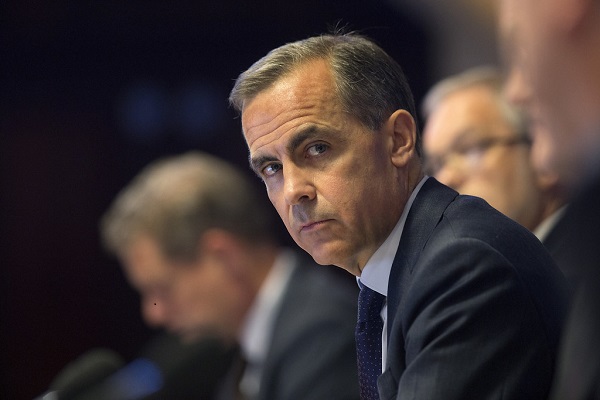
 2025 Federal Election22 hours ago
2025 Federal Election22 hours agoBREAKING: THE FEDERAL BRIEF THAT SHOULD SINK CARNEY
-
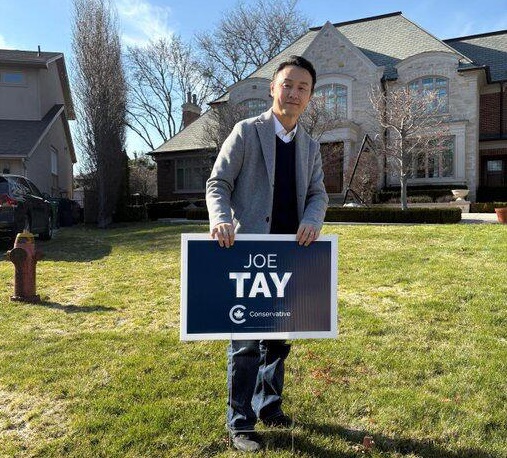
 2025 Federal Election23 hours ago
2025 Federal Election23 hours agoCHINESE ELECTION THREAT WARNING: Conservative Candidate Joe Tay Paused Public Campaign
-
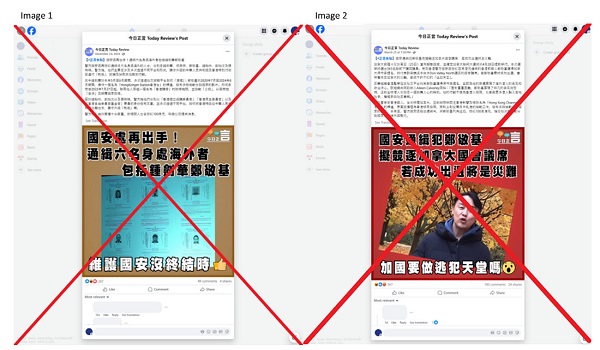
 2025 Federal Election1 day ago
2025 Federal Election1 day agoOttawa Confirms China interfering with 2025 federal election: Beijing Seeks to Block Joe Tay’s Election
-
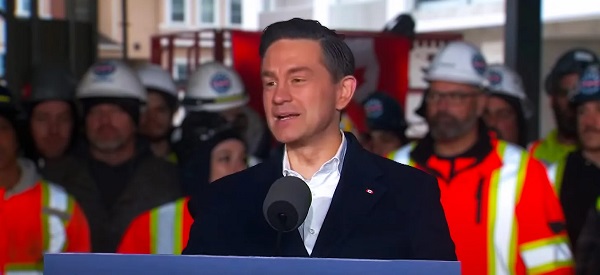
 2025 Federal Election1 day ago
2025 Federal Election1 day agoReal Homes vs. Modular Shoeboxes: The Housing Battle Between Poilievre and Carney
-

 Business11 hours ago
Business11 hours agoHudson’s Bay Bid Raises Red Flags Over Foreign Influence
-
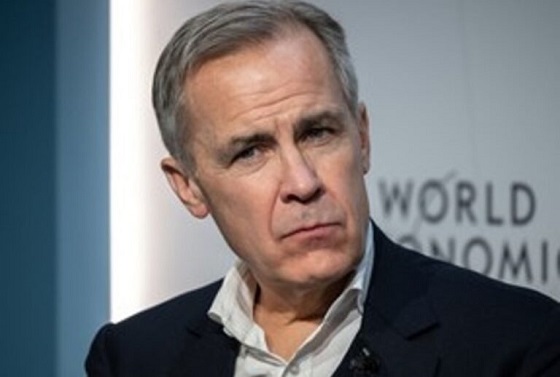
 2025 Federal Election8 hours ago
2025 Federal Election8 hours agoMark Carney Wants You to Forget He Clearly Opposes the Development and Export of Canada’s Natural Resources
-

 2025 Federal Election1 day ago
2025 Federal Election1 day agoHow Canada’s Mainstream Media Lost the Public Trust
-
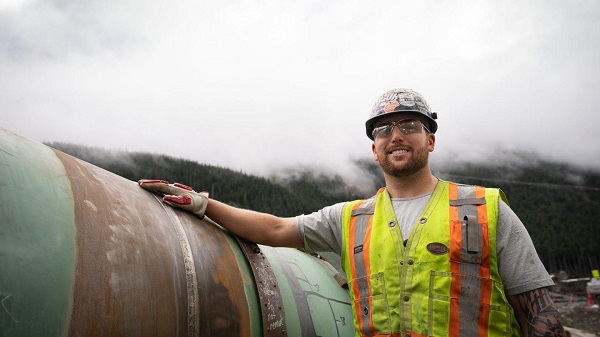
 2025 Federal Election8 hours ago
2025 Federal Election8 hours agoCanada’s pipeline builders ready to get to work
